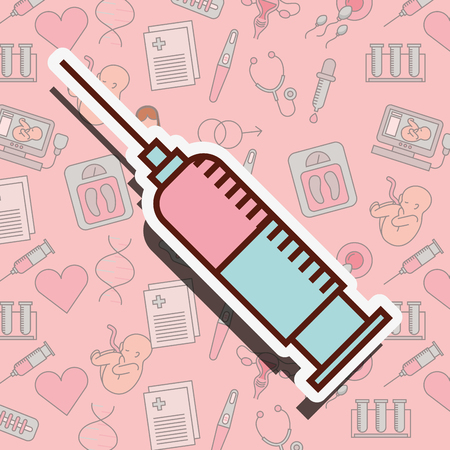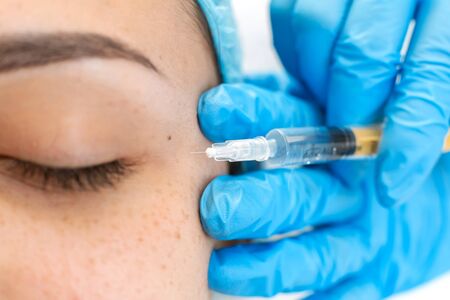Introduction to Facial Contouring Injectables
Facial contouring injectables have rapidly gained popularity across the United States as a go-to solution for individuals seeking subtle, non-surgical enhancements. These minimally invasive treatments utilize FDA-approved products—such as dermal fillers and neuromodulators—to sculpt, define, and rejuvenate facial features. Among the most sought-after options are hyaluronic acid-based fillers for cheek and jawline definition, and neurotoxins like Botox or Dysport for smoothing wrinkles and refining facial symmetry. The appeal of these procedures lies in their ability to deliver noticeable yet natural-looking results with minimal downtime, making them an increasingly attractive alternative to traditional surgical interventions. As American beauty standards evolve toward favoring customization and convenience, more people are turning to injectables for personalized facial contouring that fits seamlessly into their busy lifestyles.
2. The Consultation Experience
When you schedule your first facial contouring injectable treatment, the initial consultation is a critical step in ensuring both safety and satisfaction. This session is designed to align your personal goals with realistic medical outcomes, leveraging the provider’s local expertise and knowledge of American facial aesthetics. Here’s what you can expect during this important phase:
Personalized Assessment
Your provider will start by taking a detailed medical history, including any allergies or previous cosmetic treatments. They’ll ask about your specific concerns—whether it’s enhancing cheekbones, defining the jawline, or smoothing out asymmetries. This conversation helps the practitioner understand your motivations and set achievable expectations.
Expert Evaluation Techniques
The practitioner will evaluate your facial structure using both visual assessment and palpation (gentle touching). Advanced providers may employ digital imaging software to simulate potential results, which is especially popular in U.S. clinics for helping patients visualize outcomes before committing to treatment.
Key Elements of the Consultation Process
| Step | Description | Providers Role |
|---|---|---|
| Medical Review | Discuss health history, medications, allergies | Ensure safety & suitability for injectables |
| Goal Setting | Clarify aesthetic preferences & priorities | Align patient desires with feasible outcomes |
| Facial Analysis | Examine bone structure, skin elasticity, symmetry | Select best injection sites & techniques |
| Treatment Planning | Outline product options, expected results, aftercare needs | Create a customized plan using U.S.-approved products |
| Q&A Session | Answer questions on risks, downtime, longevity of results | Provide transparent and culturally relevant information |
Cultural Sensitivity in U.S. Consultations
American providers are trained to respect diverse beauty standards and communicate clearly about what is possible based on your unique features. They prioritize informed consent and patient education to ensure you feel confident in every decision.

3. Preparation and Pre-Treatment Guidelines
Proper preparation is key to achieving the best results from your first facial contouring injectable treatment. U.S. practitioners typically provide a set of common guidelines to help minimize side effects, optimize outcomes, and ensure your safety throughout the process.
Medication Restrictions
Before your appointment, you’ll likely be asked to review any medications or supplements you’re taking. Many clinics in the United States recommend avoiding blood-thinning medications such as aspirin, ibuprofen (Advil, Motrin), and certain herbal supplements like ginkgo biloba or fish oil for at least one week prior to treatment. This helps reduce the risk of bruising and bleeding at injection sites. Always consult with your provider before stopping any prescribed medication.
Lifestyle Adjustments
In addition to medication adjustments, American practitioners often advise patients to refrain from alcohol consumption for 24-48 hours before their session. Alcohol can increase the likelihood of swelling and bruising. Smoking is also discouraged, as it can slow down healing and negatively impact skin quality. Staying well-hydrated and maintaining a healthy diet in the days leading up to your treatment will further support optimal results.
What to Bring on Treatment Day
On the day of your procedure, bring a valid photo ID, any completed paperwork provided by your clinic, and a list of current medications or allergies. It’s a good idea to arrive without makeup and with clean skin; many U.S. providers prefer starting with a fresh canvas to ensure sterility. If you’re feeling anxious, consider bringing headphones for relaxation or a trusted friend for moral support—though some clinics may have visitor policies due to privacy or safety protocols.
Final Tips
Ahead of your appointment, check with your clinic about specific recommendations or restrictions unique to their practice. Following these preparatory steps will help make your first facial contouring injectable experience smooth, safe, and successful.
4. The Treatment Process
Understanding the step-by-step process of your first facial contouring injectable treatment can help you feel more prepared and confident. Here is a detailed breakdown of what typically happens during an injectable session at a reputable American clinic, with a focus on patient comfort and safety.
Step-by-Step Injectable Session
| Step | Description | Comfort Measures |
|---|---|---|
| 1. Check-In & Consent | You’ll complete paperwork, review your medical history, and sign consent forms as required by U.S. regulations. | Front desk staff will answer initial questions and offer water or reading material to ease nerves. |
| 2. Consultation Review | Your provider will confirm your treatment plan, discuss your goals, and address last-minute concerns. | Clear communication is prioritized; providers are trained to make you feel at ease. |
| 3. Cleansing & Prep | The targeted area will be thoroughly cleaned to prevent infection. Photos may be taken for before-and-after comparison. | Sterile techniques and medical-grade cleansers are used for safety and peace of mind. |
| 4. Numbing Options | You may choose between topical numbing cream, ice application, or local anesthetic injections depending on personal preference and clinic offerings. | The provider will discuss pros and cons of each numbing method to maximize comfort. |
| 5. Injection Procedure | The actual injections are administered using fine needles or cannulas. The provider works carefully to ensure symmetry and natural-looking results. | Providers often use gentle distraction techniques (conversation, breathing cues) to reduce anxiety. |
| 6. Immediate Aftercare | The provider applies gentle pressure or cooling packs to minimize swelling or bruising immediately post-injection. | You’ll receive verbal instructions plus a printed aftercare sheet customized to your treatment. |
American Clinic Protocols for Safety & Comfort
- Sterility: Only FDA-cleared products are used, with strict adherence to sterile protocols.
- Pain Management: Multiple numbing options are available; most clinics cater to varying pain tolerances.
- Real-Time Feedback: Providers regularly check in with you during the procedure to adjust their technique or pause if needed.
- Transparency: You can always ask about the product being used, its expiration date, and see it opened in front of you.
- Privacy & Confidentiality: Patient privacy is protected under HIPAA regulations throughout every step of the process.
Your Comfort Is the Priority
The best American clinics place significant emphasis on making patients comfortable—physically and emotionally—throughout the injectable session. Whether it’s offering stress balls, playing soothing music, or simply explaining each step as it happens, these measures are designed to create a positive experience from start to finish.
5. Recovery, Aftercare, and Downtime
After receiving your first facial contouring injectable treatment, understanding the recovery process is essential for achieving optimal results and minimizing discomfort. Most patients in the U.S. experience mild to moderate swelling, redness, or bruising at the injection sites within the first 24-48 hours. These reactions are common and typically resolve on their own within a few days.
Typical Post-Procedure Experiences
It’s normal to feel slight tenderness or tightness in treated areas immediately after the procedure. Some individuals may notice minor asymmetry or unevenness as swelling fluctuates—this usually improves as your body heals. Rarely, small lumps can form under the skin but often dissipate with gentle massage or over time.
Standard U.S. Aftercare Advice
To ensure a smooth recovery, most providers recommend keeping your head elevated for several hours post-treatment and avoiding strenuous activities for at least 24 hours. Applying a cold compress intermittently can help reduce swelling and discomfort. Its important not to touch or massage the injection areas unless specifically instructed by your provider, as this could affect product placement.
Tips for a Smooth Recovery
Avoid alcohol and excessive salt intake for a couple of days to minimize fluid retention and swelling. Stay hydrated, follow any personalized instructions from your injector, and keep an eye out for signs of infection such as increasing redness, heat, or pain—which should be reported promptly to your provider. Typically, most people can return to work or social activities within one to two days, but makeup should be avoided for at least 12 hours post-injection.
Understanding these recovery basics will help you manage expectations and support a safe, comfortable healing period following your facial contouring injectable treatment.
6. Results and Follow-Up
After your first facial contouring injectable treatment, it’s natural to be eager about results. Most patients in the U.S. begin to notice visible improvements within a few days, although the full effect may take up to two weeks to develop as swelling subsides and the product settles. How long your results last depends on the type of injectable used—dermal fillers typically last anywhere from 6 months to 2 years, while neurotoxins like Botox usually maintain their effect for 3 to 4 months.
It’s important to remember that results are not permanent, so maintenance is key for sustained benefits. In the United States, it’s common practice for clinics to recommend scheduling follow-up appointments before you leave your initial session. This ensures timely touch-ups and allows your provider to monitor your progress. During these visits, adjustments can be made based on how your face responds to the treatment and your evolving aesthetic goals. By following this routine, you can enjoy consistently natural-looking enhancements tailored to your features.


